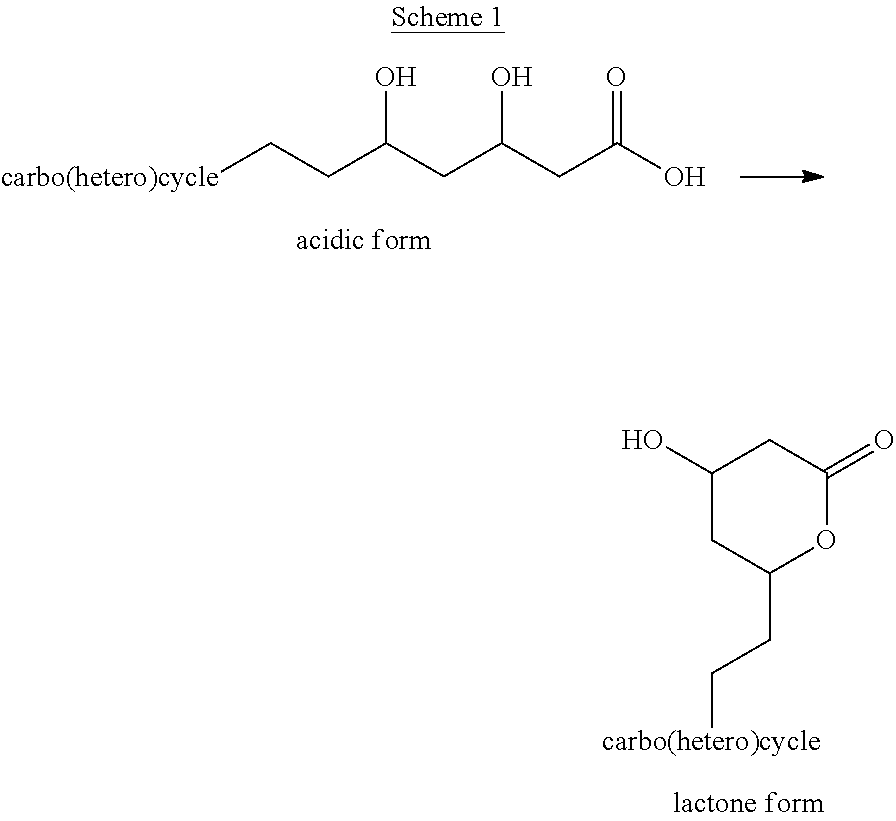Anti-neurodegenerative combinations and use for treatment of neurodegenerative diseases
- Summary
- Abstract
- Description
- Claims
- Application Information
AI Technical Summary
Benefits of technology
Problems solved by technology
Method used
Image
Examples
specific embodiments
[1170]As mentioned above, for the treatment of a PMND, the 5HT3-antagonist and / or the NK1-antagonist Component (a), the 6-propylamino-4,5,6,7-tetrahydro-1,3-benzothiazole-2-amine Component (b) and the fluoxetine, zonisamide, or statin Component (c) are formulated, separately or in fixed-dose combinations, in a pharmaceutical composition in dosage unit form, each in admixture with a pharmaceutical carrier.
[1171]Thus, for the above method (or use), each of Component (a), Component (b), Component (c), fixed-dose combination (ab), fixed-dose combination (ac), fixed-dose combination (bc) and fixed-dose combination (abc) is formulated in a pharmaceutical composition in dosage unit form in admixture with a pharmaceutical carrier or vehicle, herein below referred to as “Unit Form”. In the Unit Form, each of the Component (a), Component (b) and Component (c) may also be formulated separately, each in admixture with a pharmaceutical carrier or vehicle.
[1172]As also set forth above, for said u...
example 1
[1317]A Phase I-II clinical study conducted in parkinsonian subjects receiving oral doses of pramipexole or fluoxetine, alone and in combination. The trial was designed as a single-blind, placebo-controlled study.
[1318]The objective of the study was to demonstrate that pramipexole and fluoxetine, when administered together at their standard therapeutic doses, can safely normalize concentrations of synuclein species in peripheral blood exosomes.
[1319]To be enrolled in the study, male or female participants (40 to 89 years of age) were required to carry the diagnosis of Parkinson's disease or a related synucleinopathic disorder. Additionally, they had to agree to refrain from other antiparkinsonian (excepting levodopa-carbidopa) or antidepressant drugs, and to avoid prolonged intensive physical exercise during the conduct of this study. All subjects signed an informed consent form indicating that they understood the purpose of and procedures required for the study and that they were w...
example 2
[1331]A Phase I-II clinical study as described in EXAMPLE 1 is conducted in Parkinsonian subjects receiving oral doses of pramipexole or zonisamide, alone and in combination.
[1332]The objective of the study is to demonstrate that pramipexole and zonisamide, when administered together at their standard therapeutic doses, can safely tend to normalize the characteristic alterations in synuclein and synuclein congener concentrations in exosomes collected from peripheral venous blood samples from patients who safely tolerated their therapeutic regimens.
[1333]To be enrolled in the study, male or female participants (40 to 89 years of age) are required to carry the diagnosis of Parkinson's disease or a related synucleinopathic disorder. All subjects signed an informed consent form indicating that they understood the purpose of and procedures required for the study and that they are willing to participate in the study and comply with all study procedures and restrictions. Key criteria for e...
PUM
| Property | Measurement | Unit |
|---|---|---|
| Mass | aaaaa | aaaaa |
| Mass | aaaaa | aaaaa |
| Mass | aaaaa | aaaaa |
Abstract
Description
Claims
Application Information
 Login to View More
Login to View More - R&D
- Intellectual Property
- Life Sciences
- Materials
- Tech Scout
- Unparalleled Data Quality
- Higher Quality Content
- 60% Fewer Hallucinations
Browse by: Latest US Patents, China's latest patents, Technical Efficacy Thesaurus, Application Domain, Technology Topic, Popular Technical Reports.
© 2025 PatSnap. All rights reserved.Legal|Privacy policy|Modern Slavery Act Transparency Statement|Sitemap|About US| Contact US: help@patsnap.com


